自然と健やかさ
Nature & Health
東洋の伝統文化
Traditional Culture of the East
社会課題
Social Issues
芸術と文化
Art & Culture
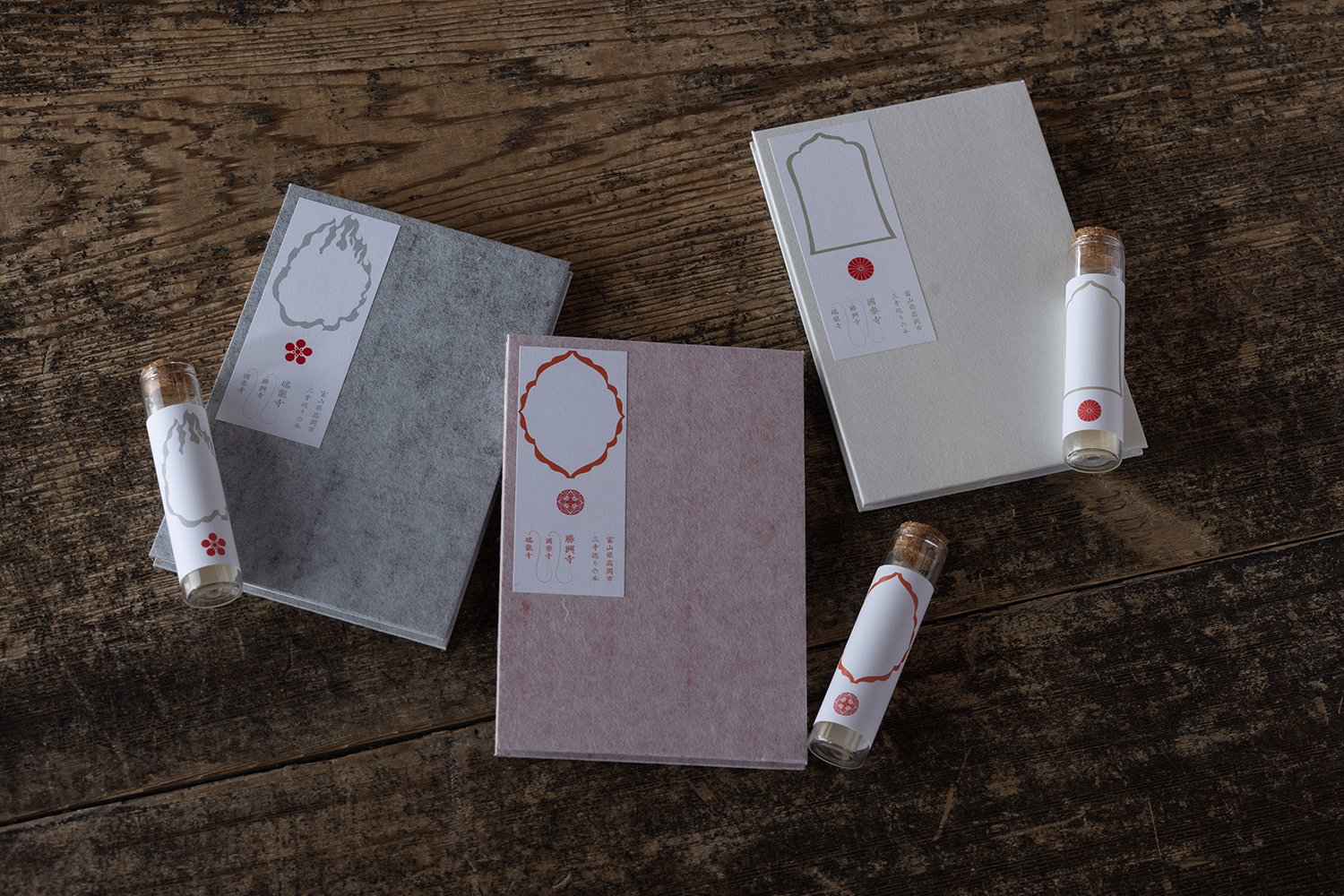
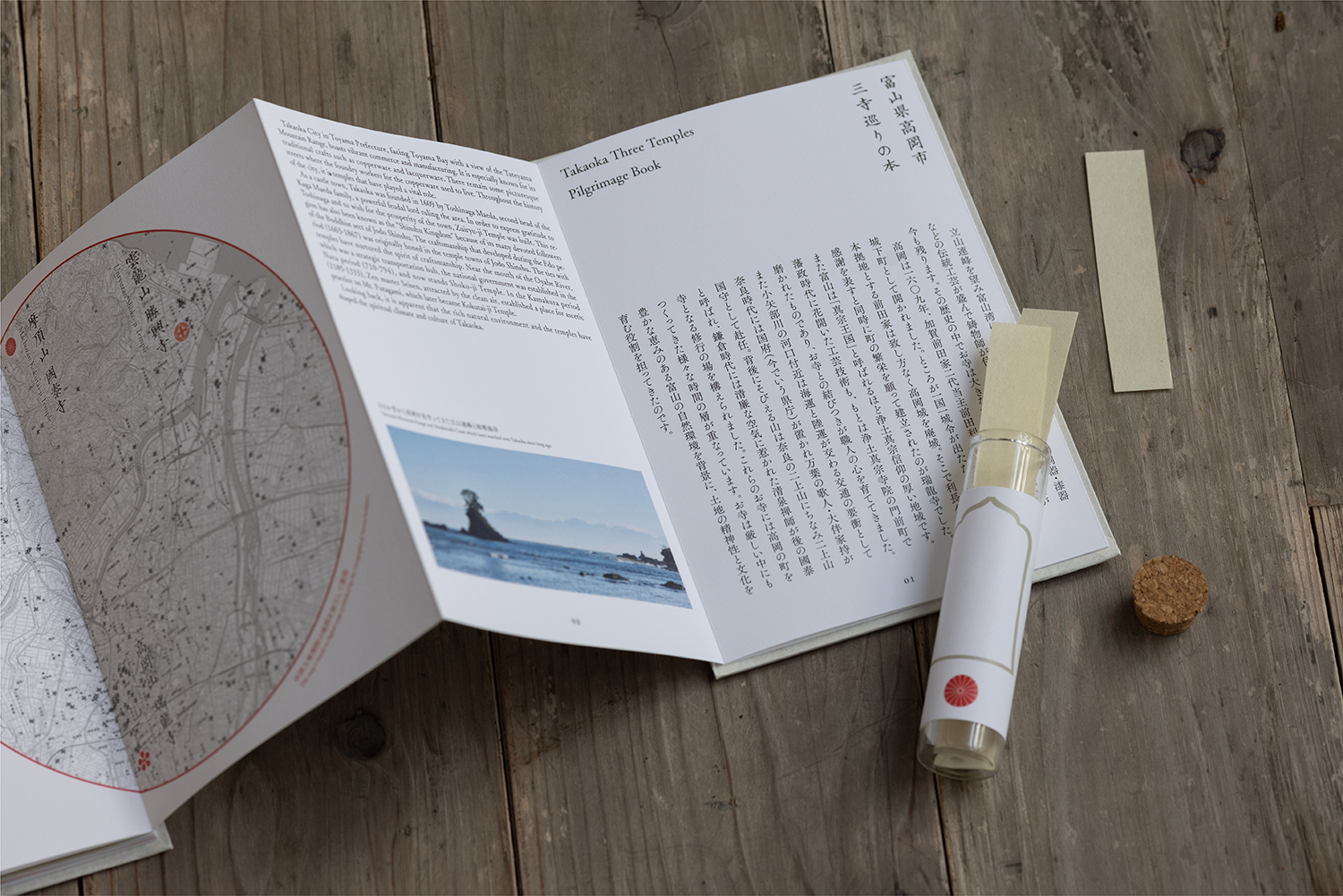
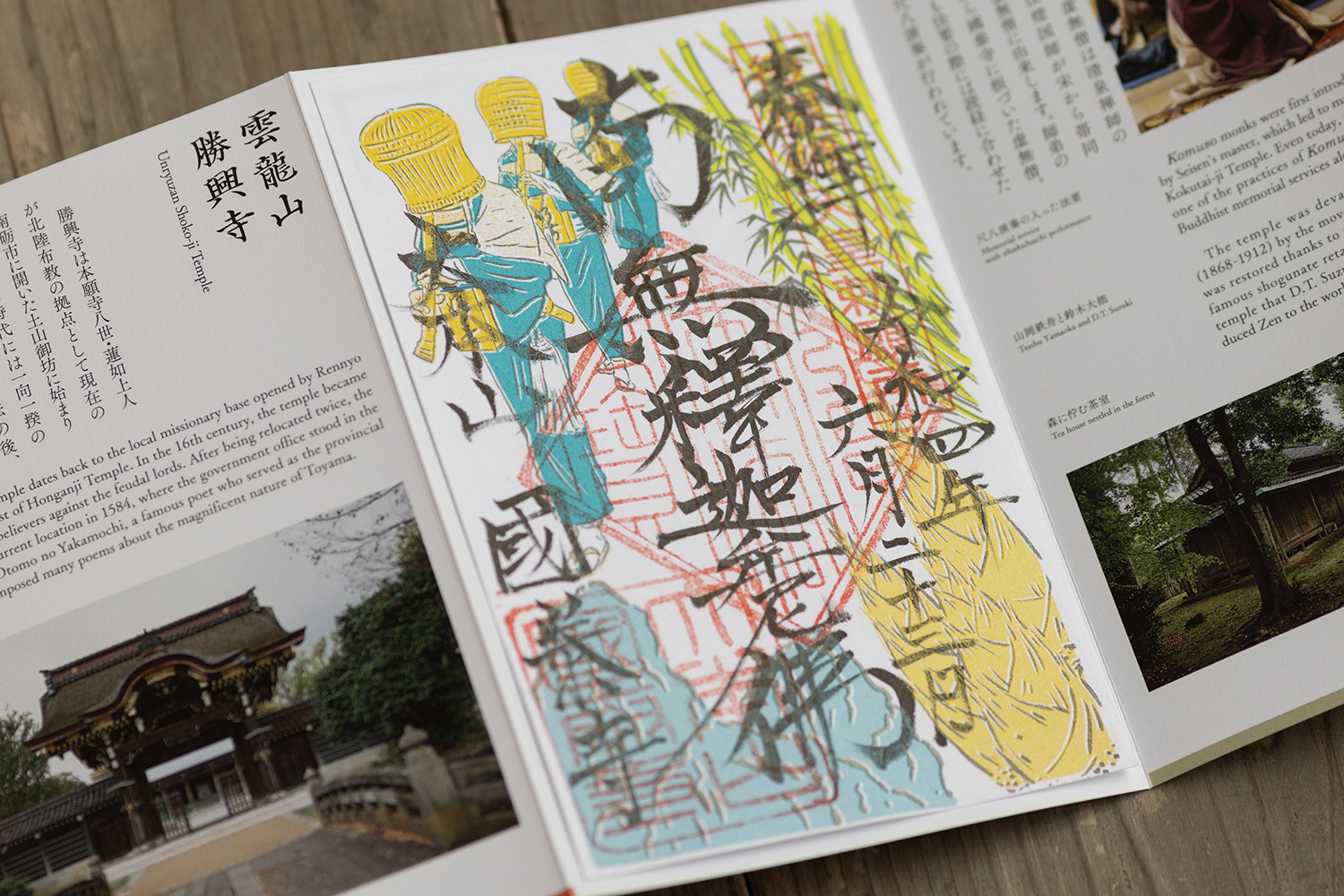
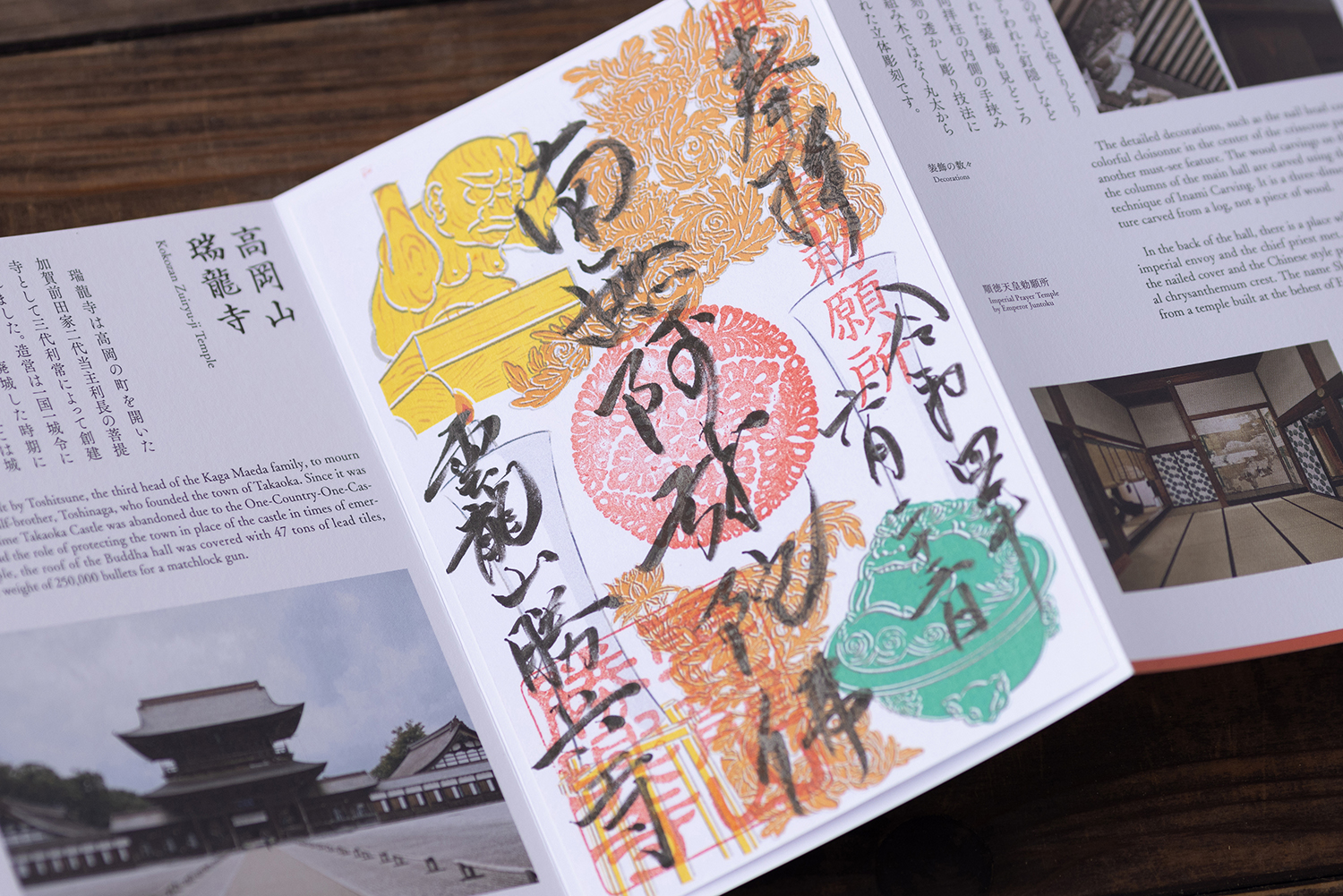

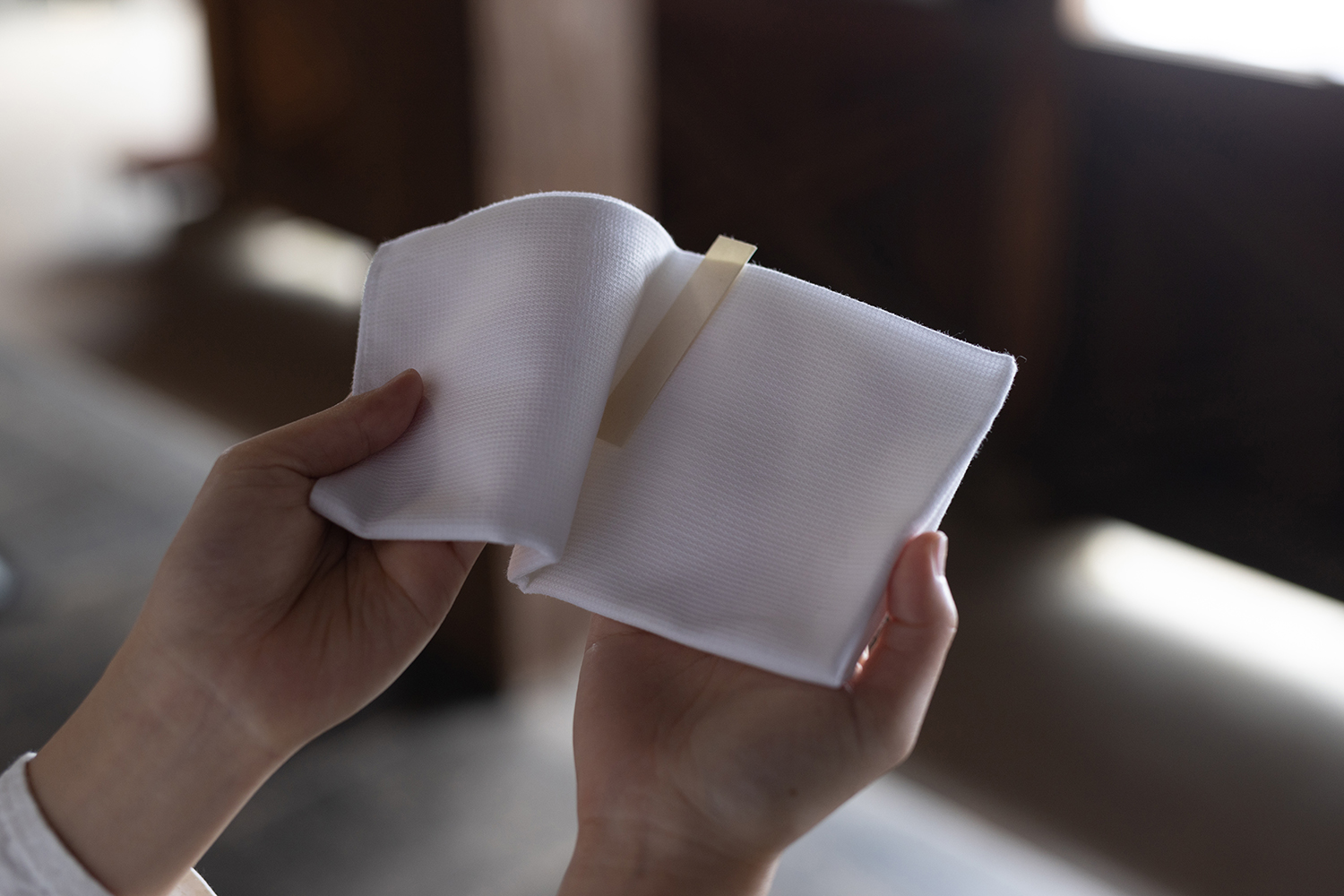
高岡三寺巡りの本
高岡を代表する3つの寺院(國泰寺・勝興寺・瑞龍寺)を巡っていただくためのお土産品として、ガイドブックとアロマペーパーのセットを作りました。國泰寺は茶室の窓、勝興寺は装飾的な蝶番、瑞龍寺は烏瑟沙摩明王立像の背後の炎を、ラベルのデザインに引用しています。
ガイドブックの表紙は、國泰寺は和紙本来の色ですが、勝興寺は赤、瑞龍寺は黒が塗られた和紙を、あえて裏返しにして製本。裏からの透け感を活かした柔らかな見た目にしています。アロマペーパーにも使用しているこの和紙は、世界遺産の合掌造り集落で知られる富山県南砺市五箇山で作られた、五箇山和紙を使用。富山の美しい水が生んだ、江戸時代から続く手漉き和紙です。
ガイドブックは蛇腹状になっていて、白紙の裏面を御朱印帳として使えます。各寺にガイドブックを持参すると、限定デザインの御朱印(勝興寺のみ浄土真宗のため、参拝記念印となります)を受け取ることもできます。各寺の特徴と言える象徴的なモチーフをたくさん散りばめた鮮やかな御朱印です。
付属のアロマペーパーは、和紙に、富山の植物を使ったオリジナルブレンド精油を染み込ませています。
國泰寺は、後醍醐天皇の勅願所であり、臨済宗國泰寺派の大本山。自然に囲まれた木訥とした雰囲気が引き立てる本物感。
勝興寺は、戸の取っ手の金具や、頭上の彫刻など、至る所の装飾があまりに美しく、際立つ華やかさ。
瑞龍寺は、禅宗様式の左右対称の伽藍配置や、建築に使われる黒みのある木材から、洗練された構成美。
それぞれから感じた印象を元に、アロマセレクトにて香りを作っていただきました。ハンカチや名刺に香りを移したり、ポーチに忍ばせたりして楽しめます。
印刷は山田写真製版所。富山を盛り上げる意味でも、納品先に近い場所で作り上げることで配送のCO2を削減する意味でも、全てを富山の皆さんによって作っていただきました。
印刷に使われるインクはNON-VOCインキを指定しています。大気汚染を招く危険性の高い有害物質・VOC(揮発性有機化合物)を発生させる石油系溶剤をほぼ使用していません。
和紙以外の紙はFSC森林認証紙を選択。管理や伐採が環境や地域社会に配慮して行なわれている森林のパルプが使われています。
PL, E : 一般社団法人 富山県西部観光社 水と匠
AD, D : 清水彩香
W : 籔谷智恵
I(御朱印・参拝記念印) : ROLE, 佐藤義隆
アロマペーパー制作 : AROMA SERECT
和紙制作 : 一般財団法人 五箇山和紙の里
Print : 株式会社山田写真製版所
監修 : 國泰寺, 勝興寺, 瑞龍寺
PH : 田中祐樹
Takaoka Three Temples Pilgrimage Book
I created a set of guidebooks and aroma paper as a souvenir for visiting the three temples that represent Takaoka (Kokutaiji, Shokoji, and Zuiryuji). Kokutaiji's tea room window, Shokoji's decorative hinges, and Zuiryuji's flames behind the standing statue of the Vidyaraja Ucchusma are referred to in the label designs.
For the covers of the guidebooks, I used the original color of the Japanese paper for Kokutaiji, but for the other two, I used washi which is colored red for Shokoji and black for Zuiryuji and intentionally flipped them inside out for the binding. They have a soft appearance that makes use of the transparency from the back. This Japanese paper, which is also used for the aroma paper, uses Gokayama washi made in Gokayama, Nanto, Toyama Prefecture, which is known for its gassho-zukuri villages, a World Heritage Site. It is handmade Japanese paper from the Edo period, born from the beautiful water of Toyama.
The guidebooks resemble bellows, and the back sides of the blank pages can be used as a stamp book. If you bring the guidebooks to each temple, you can also receive goshuins with limited designs (only Shokoji will provide a stamp commemorating your visit as it belongs to the Jodo Shinshu sect). These goshuins are vivid and have a lot of symbolic motifs that can be said to be the characteristics of each temple.
The included aroma paper is washi which has absorbed an original blend of essential oils made from plants from Toyama.
Kokutaiji is the place of imperial prayer for Emperor Godaigo and the head temple of the Kokutaiji school of the Rinzai sect of Buddhism. Surrounded by nature, the rustic atmosphere enhances its authenticity.
At Shokoji, the decorations everywhere, including the metal fittings on the door handles and the carvings overhead, are so beautiful that they stand out splendidly.
Zuiryuji has a refined architectural beauty, with its symmetrical layout of the temple in the Zen style and the dark wood used in its construction.
I had Aroma Select create scents based on the impressions I got from each temple. You can enjoy it by transferring the scent to a handkerchief or business card or putting it in a pouch.
These were printed by Yamada Photo Process. I had everyone from Toyama make everything, both to uplift Toyama and to reduce CO2 from delivery by making it in a place close to the delivery destination.
All ink used for printing is specifically NON-VOC ink. Petroleum-based solvents that generate VOCs (volatile organic compounds) were almost never used, as these harmful substances carry a high risk of causing air pollution.
For paper other than washi, FSC-certified paper is selected. Pulp is used from forests where management and logging are conducted with concern for the environment and regional community.
PL, E : ‘Mizu to Takumi’ Toyama West Tourism Promotion Association
AD, D : Ayaka Shimizu
W : Chie Yabutani
I(Goshuin) : ROLE, Yoshitaka Sato
Aroma Paper Production : AROMA SERECT
Washi Paper Production : Gokayama Washi no Sato
Print : YAMADA PHOTO PROCESS CO.,LTD
Supervision : Kokutai-ji, Shoko-ji, Zuiryu-ji
PH : Yuki Tanaka